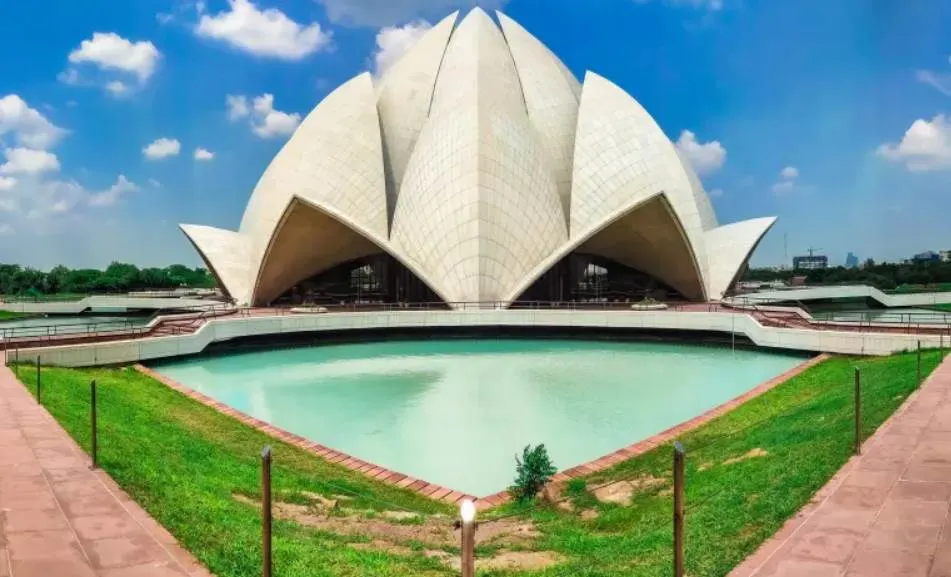India is an enormous country in South Asia and the second-most populous country in the world after China.
It’s one of those places on the planet that make you stand in awe with everything you see, and this is the case for the country’s immense cities as well as its natural beauty.
The Indian subcontinent is continuously pushing north, a process that started about 75 million years ago and which has created the highest mountains in the world.
The country also features a coastline with a length of 7,517 kilometers (4,700 miles), including the various islands that belong to the country.
In this article, we’ll take a closer look at some of the most famous buildings in India, architecture that you simply must put on your bucket list when you plan to visit this amazing country.
1. Admire the architecture of the Taj Mahal
The Taj Mahal is easily one of the most iconic structures on the planet.
It’s not just one of the most remarkable mausoleums in the world but was also chosen as one of the New 7 Wonders of the World.
It’s located in the city of Agra in the Indian state of Uttar Pradesh in the northern part of the country.
It was commissioned by the Mughal Emperor Shah Jahan in 1632 and was built in honor of his late wife Mumtaz Mahal (1593-1631), who was also his favorite wife (yes, he had multiple).

Estimates state that the money he spent was about US$956 billion, and when you get a chance to admire this incredible architectural miracle then you’ll surely understand where that money went.
Official website: Taj Mahal
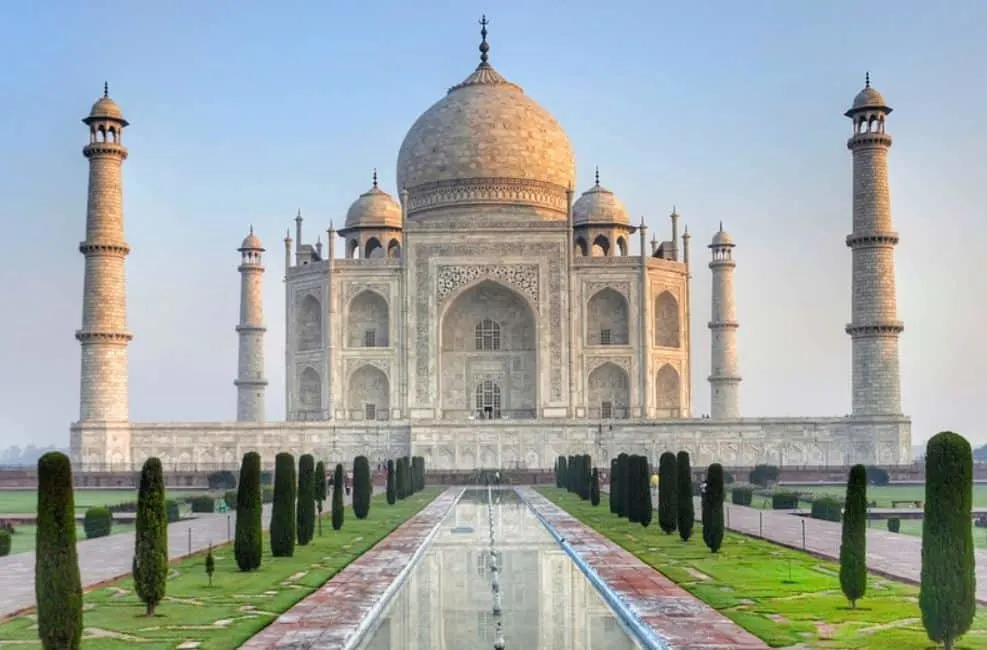
2. Hawa Mahal
The Hawa Mahal is a stunning palace in the Indian city of Jaipur, the largest city and capital of the Indian state of Rajasthan in the northern part of the country.
The most fascinating feature of the palace is its red and pink sandstone façade. It’s located on the edge of the City Palace, a large complex of royal buildings in Jaipur.
The façade overlooks the street and features a total of 953 small windows. This is not only an amazing sight but also had a functional purpose when the palace was completed in the late 18th century.
Through these windows, the ladies of the court were able to watch festivities on the street below. They weren’t allowed to show themselves so they could take a peek without being noticed.

3. Akshardham
Akshardham, officially known as Swaminarayan Akshardham, is an enormous Hindu Temple complex in New Delhi that combines spiritual with education facilities.
Visitors can learn everything about the past Millennia of Hinduism at the complex ranging from architecture to spirituality and Hind culture in general.
The complex features multiple exhibits such as the Sahajanand Darshan (the Hall of Values), the Nilkanth Darshan (a Theatre), and a boat ride named the Sanskruti Vihar.
This 12-minute boat ride brings visitors to 10,000 years of history using figures and robotics, an amazing experience if you want to learn everything about Indian culture.
To top it off, the complex also features a musical fountain called the Yagnapurush Kund which is India’s largest step well.
Official website: Akshardham Temple

4. Mysore Palace
Mysore Palace is officially known as “Mysuru Palace” and is one of the most intriguing palaces in India. It’s located in the state of Karnataka in the southwest of India and the city of Mysore in the southern part of the state.
This palace isn’t the only one in the city but the major one of the 7 palaces located in the city fittingly referred to as ‘The City of Palaces.”
The current palace was built on the location of an old fort with the first palace inside their fort dating back to the 14th-century.
Multiple places followed this original version and the current palace, which features the traditional Indo-Saracenic architectural style, was constructed between 1897 and 1912.
It’s not just one of the most popular tourist attractions in the state of Karnataka, but one of the most famous buildings in India with over 6 million yearly visitors.
Official website: Mysore Palace Tourism
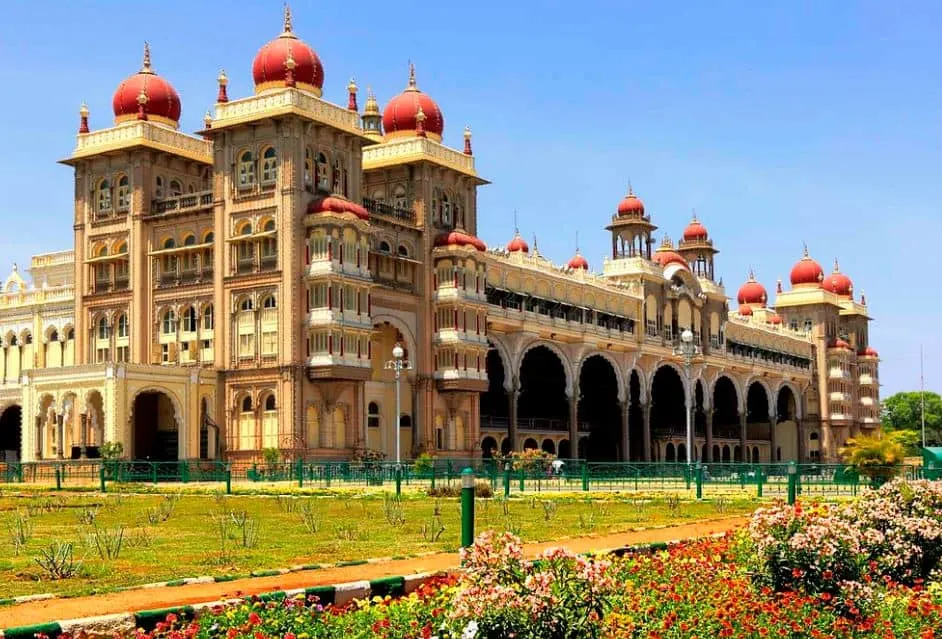
5. Meenakshi Temple
The Meenakshi Temple is officially known as the Arulmigu Meenakshi Sundareshwarar Temple and is one of the so-called Paadal Petra sthalam temples.
This is a list of 275 temples dedicated to Lord Shiva mentioned in the Tamil Saiva Nayanars verses between the 6th and 9th centuries A.D.
This particular temple complex is located in the temple city of Madurai on the banks of the Vaigai River in Tamil Nadu, a state in the utmost southern part of India.
It’s a major pilgrimage for followers of the Shaivism tradition and features some of the most fascinating Hindu architecture in India.
Official website: Meenakshi Temple
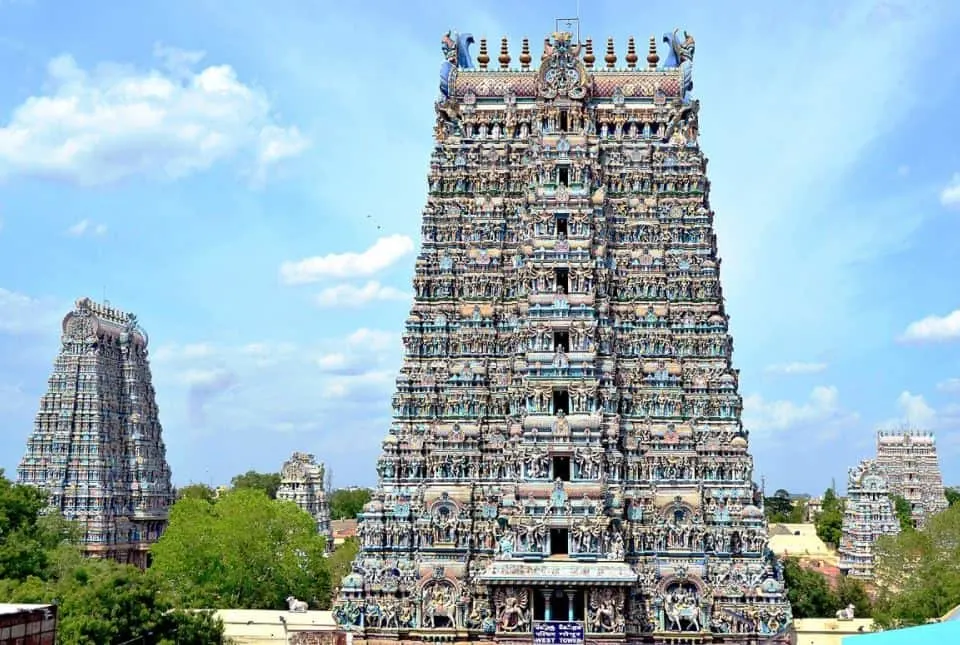
6. Golden Temple
The Golden Temple is locally known as the “Harmandir Sahib” which translates to the “Abode of God” and is the most important spiritual site of Sikhism, a Dharmic religion popular in the Punjab region of India.
This magnificent structure is located in the city of Amritsar, Punjab, in the northern part of India.
The temple complex was originally built around a man-made pool in the late 16th and early 17th centuries but ended up being destroyed several times the following period.
The current version of the temple was built in the early 19th century using marble and copper and covered with gold foil in 1830.
Today, the complex is open for everybody, regardless of your religion, and one of the most fascinating buildings in India.
Official website: Golden Temple Amritsar
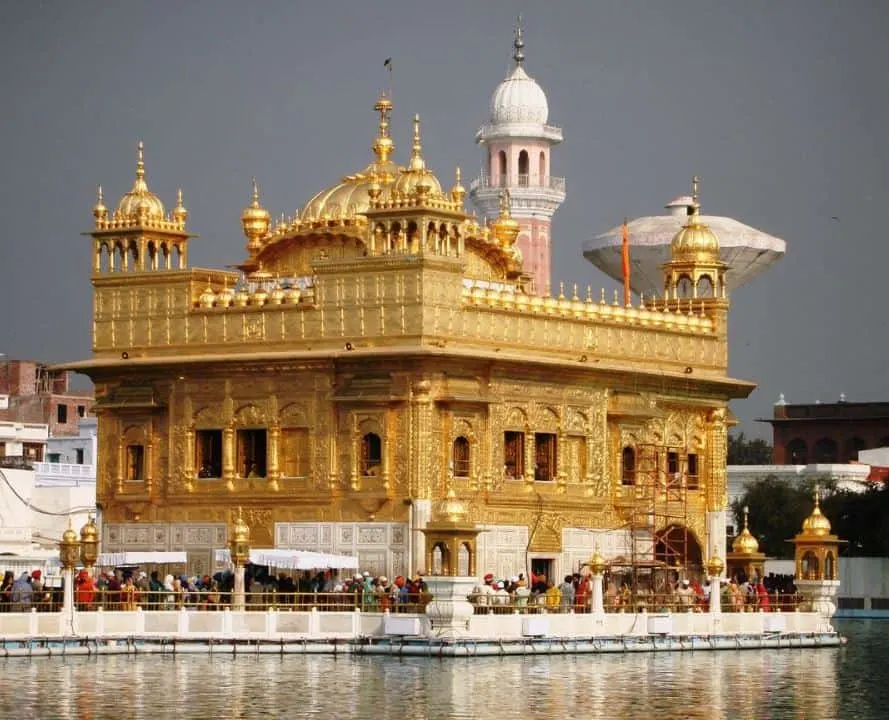
7. Konark Sun Temple
The Konark Sun Temple is located in the town of Konark on the east coast of India. The town is situated right on the coast of the Bay of Bengal in the Indian state of Odisha.
It’s believed that the temple was commissioned by king Narasimhadeva I of the Eastern Ganga dynasty in the 13th century and completed around 1250 A.D. It was dedicated to the sun god Surya which is how it got its name.
Most of the temple now lay in ruins and the main structure reaches a height of about 30 meters (100 feet). This is much lower than the immense temple it once was which was over double as high at 61 meters (200 feet).
Even though the temple is crumbling, the remaining parts are praised because of its remarkable architecture and decorations.
Until today, nobody knows for sure how the temple was destroyed and many theories regarding this event are circulating.

8. Rani Ki Vav
Rani Ki Vav is a massive stepwell in the town of Patan in the state of Gujarat. This state is located on the western coast of India.
The immense structure was built on the banks of the Saraswati river. It’s believed it was commissioned in the 11th century by a woman named Udayamati, the spouse of Chaulukya king Bhima I.
The massive complex was completely forgotten in the first half of the 20th century until it was rediscovered in the 1940s. It wasn’t until the 1980s that the entire site was excavated.
The entire structure served as both a well and an inverted temple. It features 7 levels and was decorated with 500 sculptures of Bhagwan Vishnu and 1,000 additional religious sculptures.
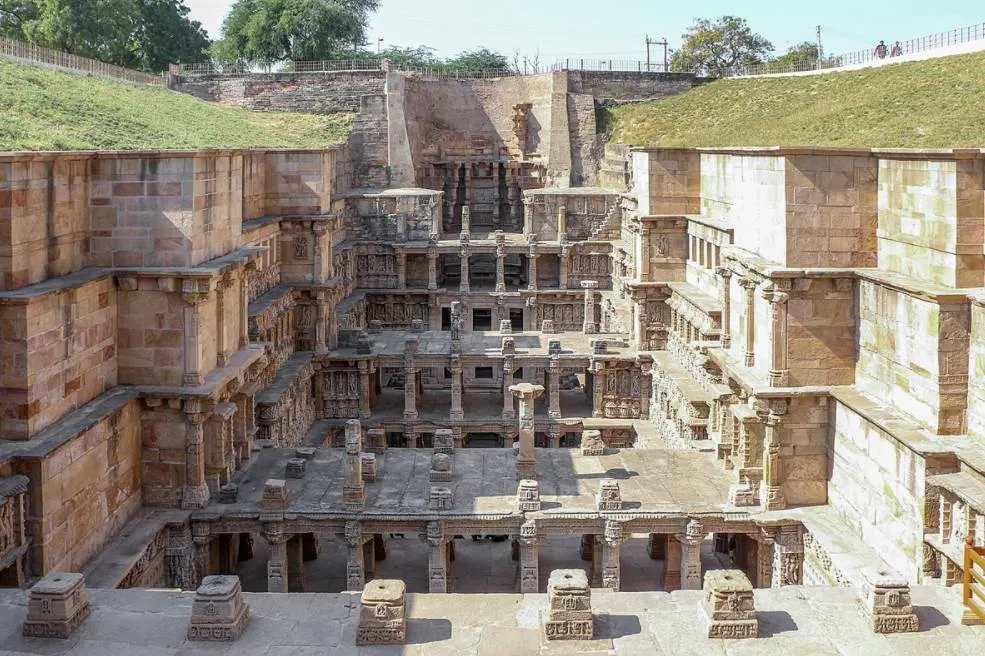
9. Chhatrapati Shivaji Terminus
The Chhatrapati Shivaji Terminus is officially known as the Chhatrapati Shivaji Maharaj Terminus. It’s a historic train station in the huge Indian city of Mumbai, the capital city of the state of Maharashtra.
The train station was originally known as the “Victoria Terminus” and was designed during the Victorian era by British engineer Frederick William Stevens.
The building features an Italian Gothic design and was completed between 1878 and 1887, just in time for the celebration of 50 years of Queen Victoria’s rule.
Today, it’s one of the busiest railway stations in India and serves as the headquarters of India’s Central Railway, one of the 18 zones of India’s railway system.
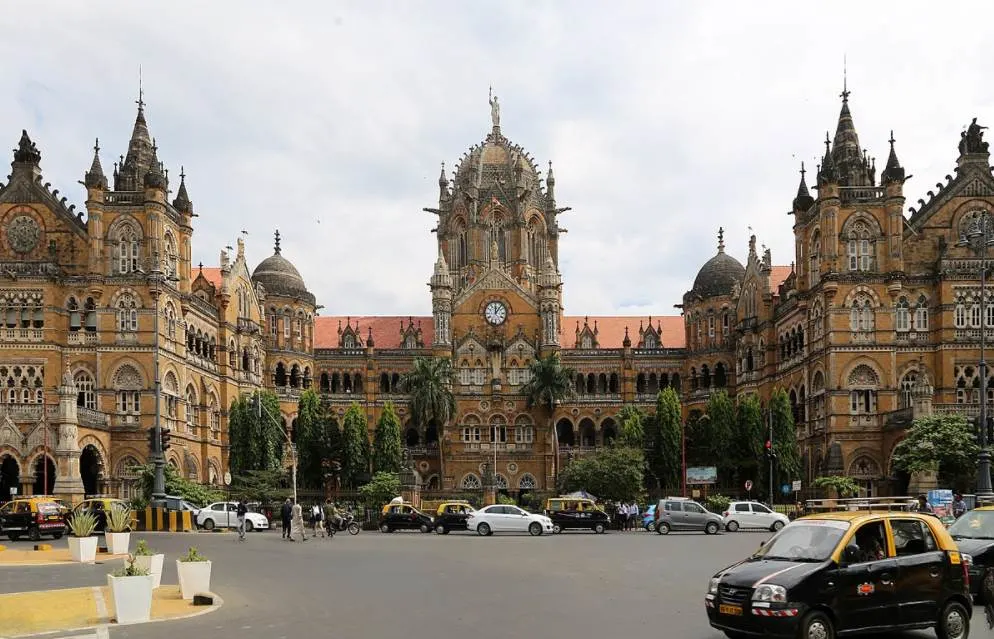
10. Lotus Temple
The Lotus Temple is one of the most distinctive buildings in India. As its name suggests, its design resembles that of a lotus flower.
Its design consists of 27 marble-clad free-standing “petals” that are grouped in clusters of 3 which means the temple has 9 sides.
It’s a Baháʼí House of Worship, and just like any similar structure in the world, it’s open as a place of worship to any form of religion. It can be accessed through 9 entrances that lead up to a central hall.
The temple is surrounded by 9 ponds and can easily be described as one of the most fascinating feats of architecture in India.
